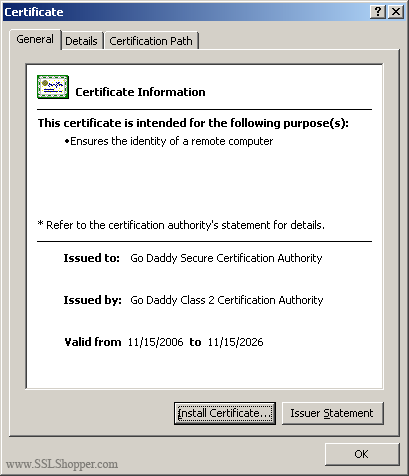Installing And Managing Certificates For Mac

Goals. Perform the initial installation and configuration of OS X Server. Consider TLS/SSL certificate requirements and best practices OS X Server for Yosemite (also informally known as Yosemite Server) helps your users collaborate, communicate, share information, and access the resources they need to get their work done.
While OS X Server indeed provides a variety of services, the aim of this guide is to focus on the services that facilitate the management of Apple devices. This lesson begins with a brief introduction of OS X Server before moving into the requirements and initial setup of OS X Server. This lesson also covers selecting and configuring Secure Sockets Layer (SSL) certificates required for Apple device management. Reference 4.1 OS X Server Benefits Other solutions are capable of providing management for Apple devices, but at only $19.99 (US), none of them is as inexpensive as OS X Server. Also, despite the price, because Apple develops OS X Server, it’s often the first management solution that supports the latest Apple management features and operating systems.
Further, even if you intend to use a third-party Mobile Device Management (MDM) solution, other services in OS X Server are still clearly the best solution. For example, the Caching service has no alternative if you want to reduce the Internet bandwidth required for installing and updating Apple-sourced software. Also, other services in OS X Server are simply the best implementation available. The NetInstall service that provides network system disk access for OS X computers is available from other servers, but the implementation in OS X Server is considered the best choice.
Services Covered in This Guide Again, this guide focuses on the OS X services that are most responsible for helping administrators manage their Apple deployments:. Caching service—As introduced previously, the Caching service greatly reduces Internet bandwidth used for the installation of Apple-sourced software and media. Lesson 5, “Caching Service,” focuses on the architecture, setup, and troubleshooting of this service. NOTE OS X Server for Yosemite still supports the legacy Software Update service. However, this older service is limited to providing updates only for OS X system software and Apple software installed from outside the Mac App Store. Due to this service’s limited use in contemporary Apple deployments, it’s not covered in this guide. Profile Manager—This is the name given to the MDM service provided by OS X Server.
The vast majority of material in this guide deals directly with or is designed around MDM management workflows. Both Lesson 6, “Configuration and Profiles,” and Lesson 7, “Mobile Device Management,” cover Profile Manager specifically. In addition, nearly all lessons that follow these two deal with topics related to MDM services. NetInstall—This service makes OS X systems available for startup via a network connection. NetInstall is often used as a platform for installing or re-imaging Mac computers en masse. Coverage of this service is beyond the scope of this guide, but you can find out more from Apple Pro Training Series: OS X Server Essentials 10.10, also from Peachpit Press. WebDAV—This is the only local file-sharing service provided by OS X Server that supports both iOS and OS X devices.
This is covered as part of Lesson 16, “User Data and Services.”. Wiki—The OS X Server Wiki service not only provides a browser-based interface for collaborative document creation but also serves as an alternative for local file sharing. This service is also covered as part of Lesson 16, “User Data and Services.”.
Installation And Managing Certificate For Machinery
I keep getting errors about not being able to establish a secure connection with my mail server in Entourage because of a bad root certificate. My ISP has sent me the necessary “trusted root certificate” file, but I have no idea how to install it. I know just what you mean because I also use an SSL connection to securely access my mail server, keeping things quite a bit more secure on an open wireless wifi network. For a long while I was also getting the error I bet you get: It turns out that Microsoft has some pretty decent instructions on how to install the certificate that you’ve gotten from your ISP here:, but I’ll summarize here too!
You first step is to save the certificate to the desktop and double-click on it. It’ll launch the Keychain Access application and show you the following dialog box: Now you’ll want to click on the “Keychain” pop-up menu and select “X509 Anchors”: Now click “OK” and enter your administrative password when it prompts you: That should do the trick. You can verify your certificate’s installed properly by going to Applications – Microsoft Office 2004 – Office and launching “Microsoft Cert Manager”. Choose “Apple Trusted Root Certificate Authorities” and then find your new certificate. Double-click it and you should see what I see here: That all there is to it.
Quit and restart Entourage and you should be clear of that pesky error message forever, or at least until the certificate expires!